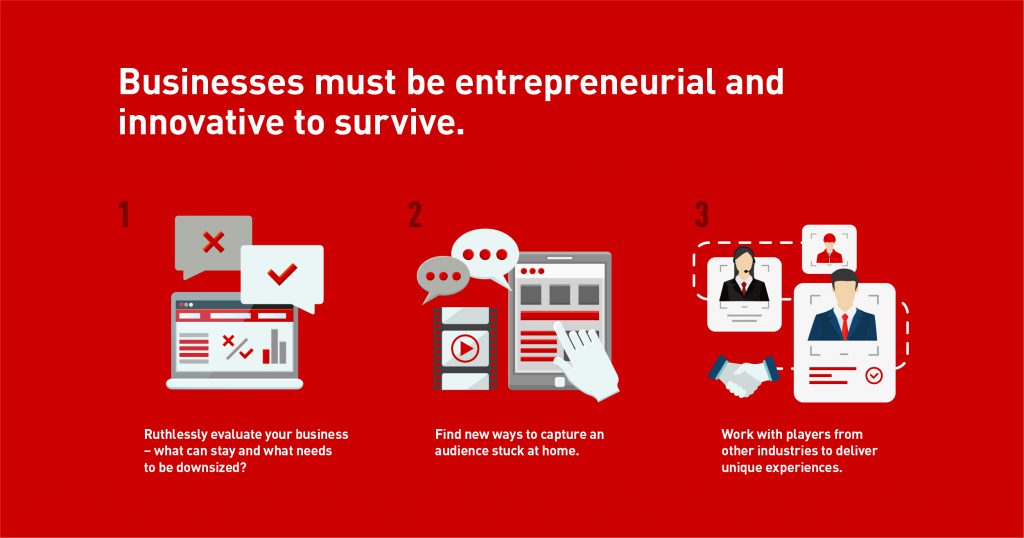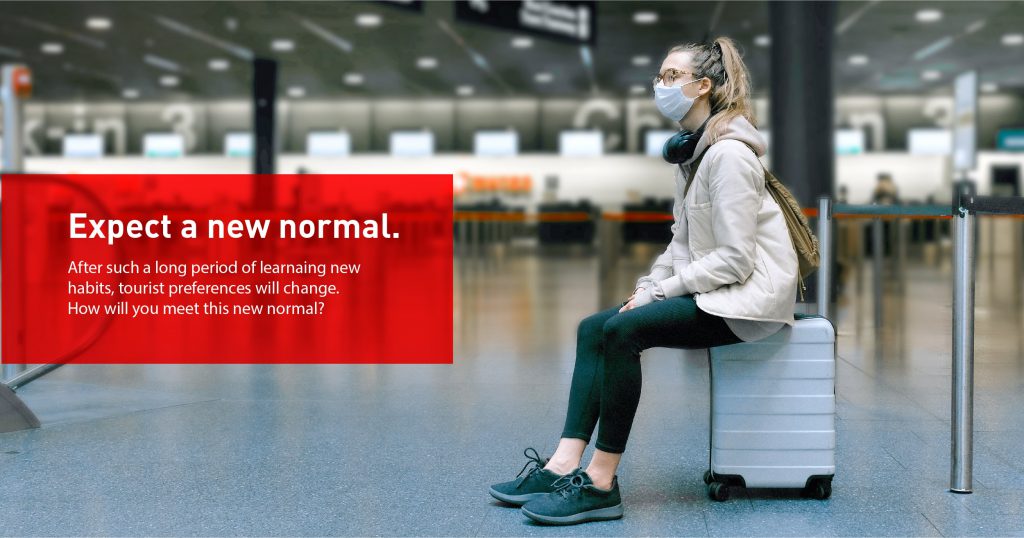By Dr Sarinder Kumari and Woody Ang, Executive Vice Presidents & Partners at PEMANDU Associates
The COVID-19 outbreak has tourism industries around the world on their knees. The pandemic has delivered one of the hardest blows to the global tourism industry. As countries around the world close their borders for fear of increasing the spread of the virus, the United Nation World Tourism Organisation (UNWTO) estimates that international tourist arrivals could decline by 1-3% globally, translating to a loss of approximately USD30 to 50 billion in international tourism receipts this year.[1]
Is this worse than SARS? From all accounts, yes. The SARS outbreak only affected specific countries whereas COVID-19 is a global pandemic – which, ironically, spread quicker than SARS ever did thanks to the explosion of tourism and business travel over the past decade.
Is the tourism industry going to survive? It is hard to tell. The COVID-19 outbreak has affected all levels of the industry – from tour guides and street vendors to multinational airline companies, everyone who depends on visitor spending is suffering losses. In Malaysia, damage to the tourism agency has yet to be calculated but already, major travel fairs in April (Cuti-cuti Malaysia was intended to be held on 4-5 April) and May (MATTA Fair on 1-3 May) have been cancelled.[2] The Malaysian Association of Hotels has also indicated that they expect occupancy to drop to 11%, as opposed to the 60-70% occupancy rate registered last year.[3]
We’re already seeing governments employing extreme measures to control the movement of people – and thus of tourists – within their borders. This means that tourism is effectively dead in the water, and many tourism-related businesses will be struggling to stay afloat while this crisis continues.
Research on a vaccine is happening at a breakneck speed but it still will take close to a year for one to be developed. It is highly doubtful that business as usual for tourism industry – or most industries for that matter – will return this year. It is also unlikely that tourist confidence will return in 2020, unless the infection curve flatlines globally. Therefore, the question we need to ask is this: what can we do about it?
Governments cannot do it alone

When faced with a crisis, governments have deployed measures targeted towards ensuring the survival of impacted businesses, whether it be financial (such as offering cashflow assistance and tax rebates) or humanitarian (like setting up relief funds to help those left without work). One of the most commonly employed solutions is to issue an economic stimulus package like the one announced by the Malaysian government in February 2020. This package initially targeted Malaysia’s tourism industry but was later expanded to have a wider coverage – however, it will cost Malaysia RM20 billion, which is a lot of money for a government already in debt.
Will it be enough to save the tourism industry? Not on its own. A stimulus package is good for giving a boost to a flagging economy. However, it is designed to be a short-term crutch and is usually built on the forecast that ‘business as usual’ will return soon. However, the sheer scale of the COVID-19 outbreak suggests that we’re in this for the long run, making short-term measures unsustainable. Fiscal incentives will only be a temporary fix.
What is needed now is a solution for the long-term. Governments should engage the private sector for projects and investment plans that can unlock investment and job creation in a time of crisis. The private sector knows better than anyone what the pain points are and, when incentivised, is in the best position to come up with innovative ideas. Collaborate and identify short-term projects that can give quick wins as well as medium- to long-term projects with high impact to balance immediate results with longer-term development goals.
Singapore is one of the many countries who announced initial relief measures aimed at reducing the burden on tourism-related businesses such as waiving licence fees for hotels, tourist guides and travel agents. Unlike other countries, it has also pulled together a Tourism Recovery Task Force, involving both government officials as well as some of the biggest tourism players in the country, and tasked it to develop and implement strategies designed to aid the tourism industry and position the country for recovery.[4] It has also provided training programmes to encourage businesses to retain and retrain their employees during this lull period. It is now up to their tourism operators to decide how they’re going move forward.
The COVID-19 outbreak is not going to be a short-term issue. No government in the world will be able to bail out all the operators on their own; the government can provide support and guidance but the will to transform to meet this challenge is up to the businesses themselves.
The private sector needs to take the lead

Transformation means finding opportunities in times of crisis. Tourism operators will need to be enterprising if they want to survive the storm.
Malaysia is currently under a movement control order, meaning that companies not offering essential services have been asked to either close or allow employees to work from home. Do not let this time go to waste; instead, use it for self-reflection. Part of being a transformational leader is knowing when to take a step back to reflect on the challenge at hand and brainstorm ways to overcome it.
Take a good long look at your business. What kind of services are likely to survive during this outbreak? Are they services that can be adopted? Are your staff trained and prepared? If not, consider using this time to downsize traditional aspects of your business that likely will not survive in the next six to eight months. This could mean finding places to store the large buses used for mass tourism, or retraining staff to handle other duties in the meantime.
Alternatively, find new ways of utilising the sites, staff and products at your disposal. As many countries are now under some form of lockdown, people are looking for means to escape the monotony and loneliness of being stuck at home all day. Take advantage of current technology to create new, digital experiences for this captive audience. For tourism site operators, how can you allow visitors to still experience the wonders of your attraction remotely? For tour guides, how can you engage an audience that is hungry for glimpses of the outside world? Tourist sites can still be ‘opened’ to a digital audience by holding virtual tours led by their own staff behind closed doors. Some museums are already doing this, but those videos tend to be fairly simple and not tailored to a specific audience. Instead, why not collaborate with local tour guides to hold personal livestream tours for small groups of paying customers? Show people something that as customers, they have never had a chance to see before and it’s likely they will keep coming back for more.
For example, Jerusalem will be launching an online platform to give people a virtual experience of the city.[5] The platform is designed to simulate as many Jerusalem experiences as possible – museum staff will hold tours inside empty museums, accompanied by cameras instead of tour groups and guides will do the same on the city’s streets. Some tours will be free, while others will require a fee that will go to the city’s tour guides whose main source of income has dried up as a result of the pandemic.
Attractions are also taking initiative and working with virtual reality (VR) companies to create their own unique product. The Tower of David Museum in Jerusalem, working with companies Blimey and OccupiedVR, will launch a VR project allowing people to remotely experience holy ceremonies such as the Holy Fire ceremony at the Church of the Holy Sepulcher and Ramadan prayers in the Al-Aqsa Mosque compound.[6]
Avoid getting stuck in an industry-specific silo mentality; working with players from other industries can open the doors to a whole range of new and interesting content. For example, collaborate with digital media companies to bring your attraction to (digital) life. Work with digital consultants to help you boost your online experience. Talk to companies specialising in brand management to learn how to build your own brand that can truly set your business apart. There are a lot of companies out there who are affected by the COVID-19 outbreak and looking for opportunities; work with them to create something new.
Don’t forget to look ahead

The COVID-19 pandemic may be a mid- to long-term crisis, but we still need to think of what a post-virus world would look like and how to prepare for it. Some things will certainly go back to normal after the threat passes, but it is hard to imagine that countries and the global economy will not be reshaped by the pandemic.
There will likely be a new normal after the COVID-19 virus clears. The SARS outbreak paved the way for certain businesses and even entire industries to succeed. For example, SARS made Alibaba into the conglomerate it is today because people were forced into the habit of shopping online.[7] Similarly, it’s likely that people will become even more comfortable buying, watching and conversing online and thus expect a certain level of digital services from businesses and governments in a post-COVID world.
It is also likely that some of the habits learned during the outbreak will stick. For one, people will likely be more cautious about hygiene and crowds – which would contribute to a decrease of interest in mass tourism, at least for a while. People were already complaining of overtourism in certain parts of the world before the COVID-19 outbreak; this would only encourage more people to either skip crowded spots altogether or be more strategic about when they venture out.
We might also see a shift in preferred destinations. Currently, the most affected countries by COVID-19 are the likes of China, Italy, Spain and America – which were also the top 10 destination countries for international tourists. As the outbreak flatlines, people would start to travel within their own countries first, and then venture out to locations that were least affected by the virus. New tourism hotspots will be found – and companies will need to be ready to accommodate this shift.
How will you rise to the challenge?
It has been three months since the WHO first heard reports of a new virus outbreak in Wuhan, China. Within that time, over 18 countries have implemented some form of movement restriction order and effectively shut down any form of travel. Others have closed their borders to all foreigners.
The global tourism industry is now in survival mode – and it will take more than just an economic stimulus package to revive the industry. It will take governments and businesses working together on solutions to aid the tourism industry and position the country for recovery. It will take businesses willing to be innovative in using technology to create new experiences that can tap into a captive audience. It will take transformational leaders who acknowledge that ‘business as usual’ is not going to happen within the next few months – and decide to do something about it.
[1] UNWTO, 2020
[2] The Borneo Post, 2020
[3] The Star, 2020
[4] Singapore Tourism Board, 2020
[5] The Times of Israel, 2020
[6] The Jerusalem Post, 2020
[7] The Drum, 2020